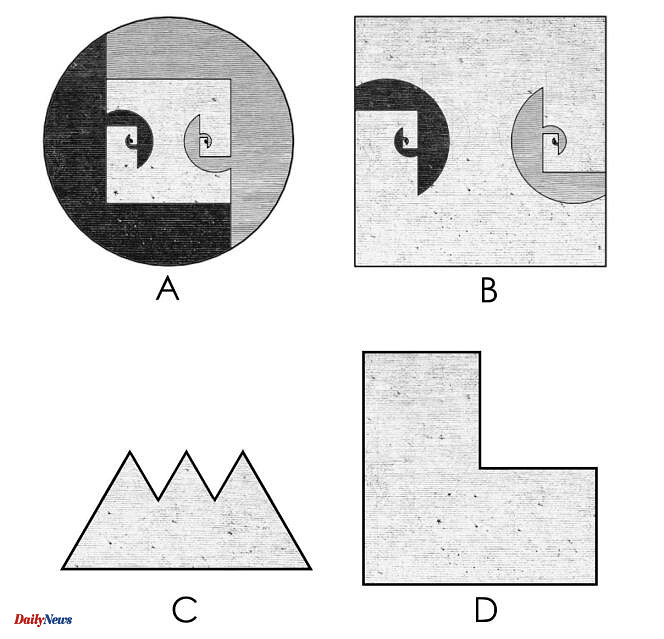A homothetic puzzle is a set of geometric pieces that can be assembled in different ways. As in a classic puzzle, it is possible to move and rotate the pieces. But, unlike a classic puzzle, it is also allowed to enlarge or shrink them as desired. Figures A and B show that with the same three pieces, it is possible to reconstruct either a disk or a square.
A theorem demonstrated in 2003 by mathematician Christian Richter even states that, if we take two (almost) arbitrary geometric figures, it is always possible to find a homothetic puzzle of three pieces allowing us to reconstruct either one or the other. His general solution, however, uses parts with certain infinitely fine details, as can be seen in the example of the disk and the square.
Following the principle of homothetic puzzles, can you cut the shape C into just two pieces to reconstruct an equilateral triangle?
And can you, with also two pieces, turn the D shape into a square?
There may be several solutions, but in both cases it is possible to achieve your goals with classic geometric figures, that is to say without infinitely fine details.
Find the previous puzzles by clicking here












